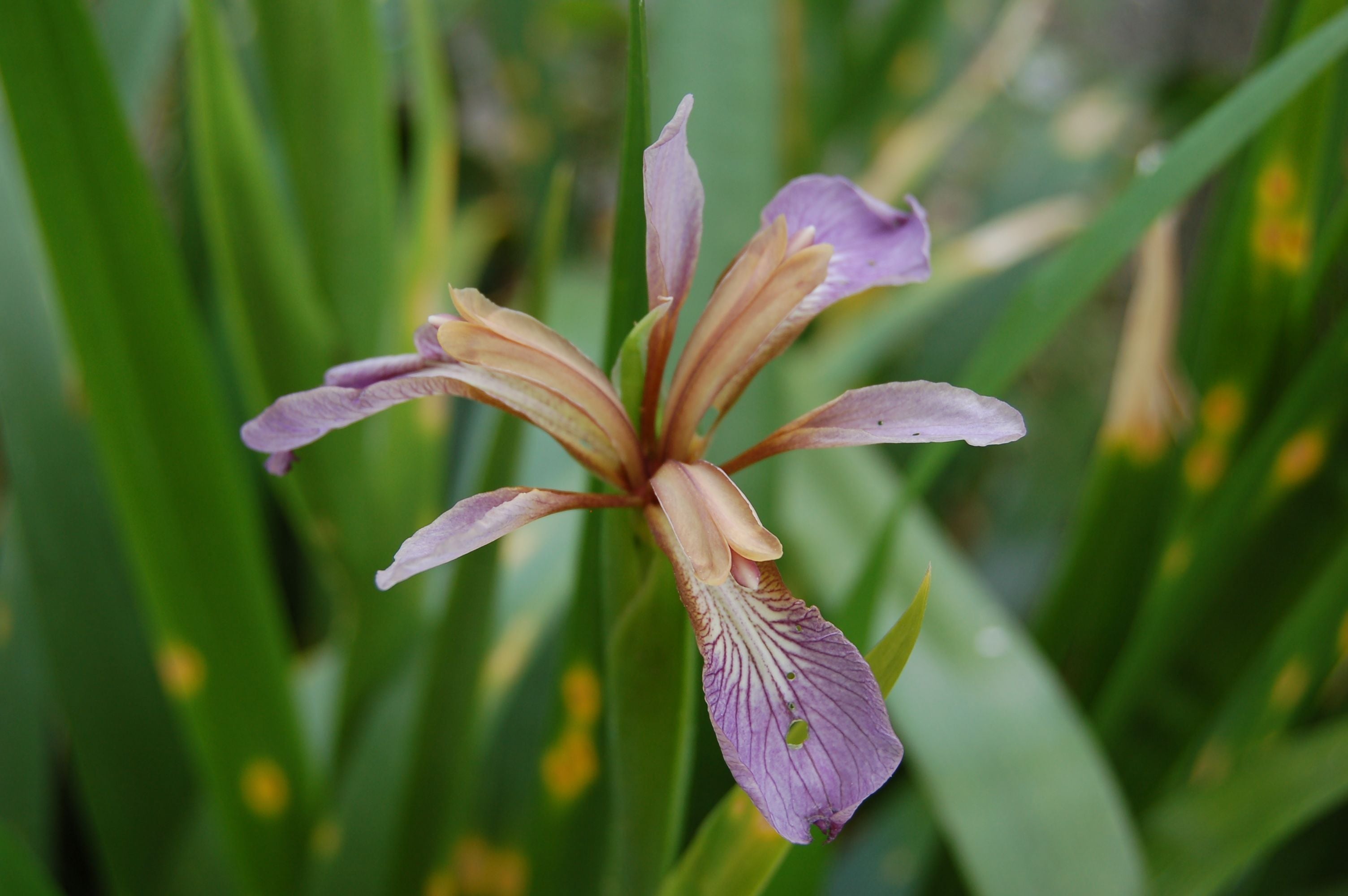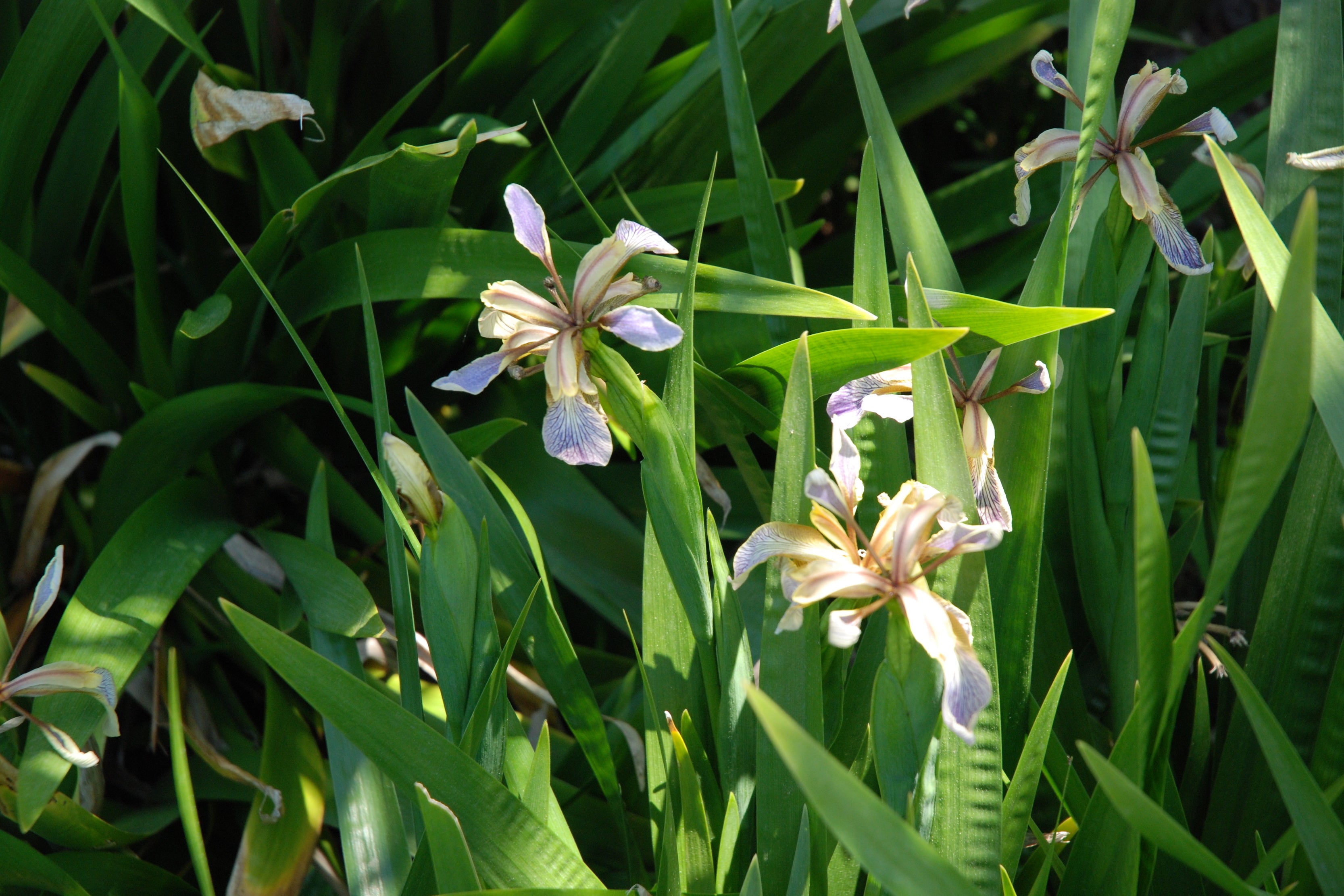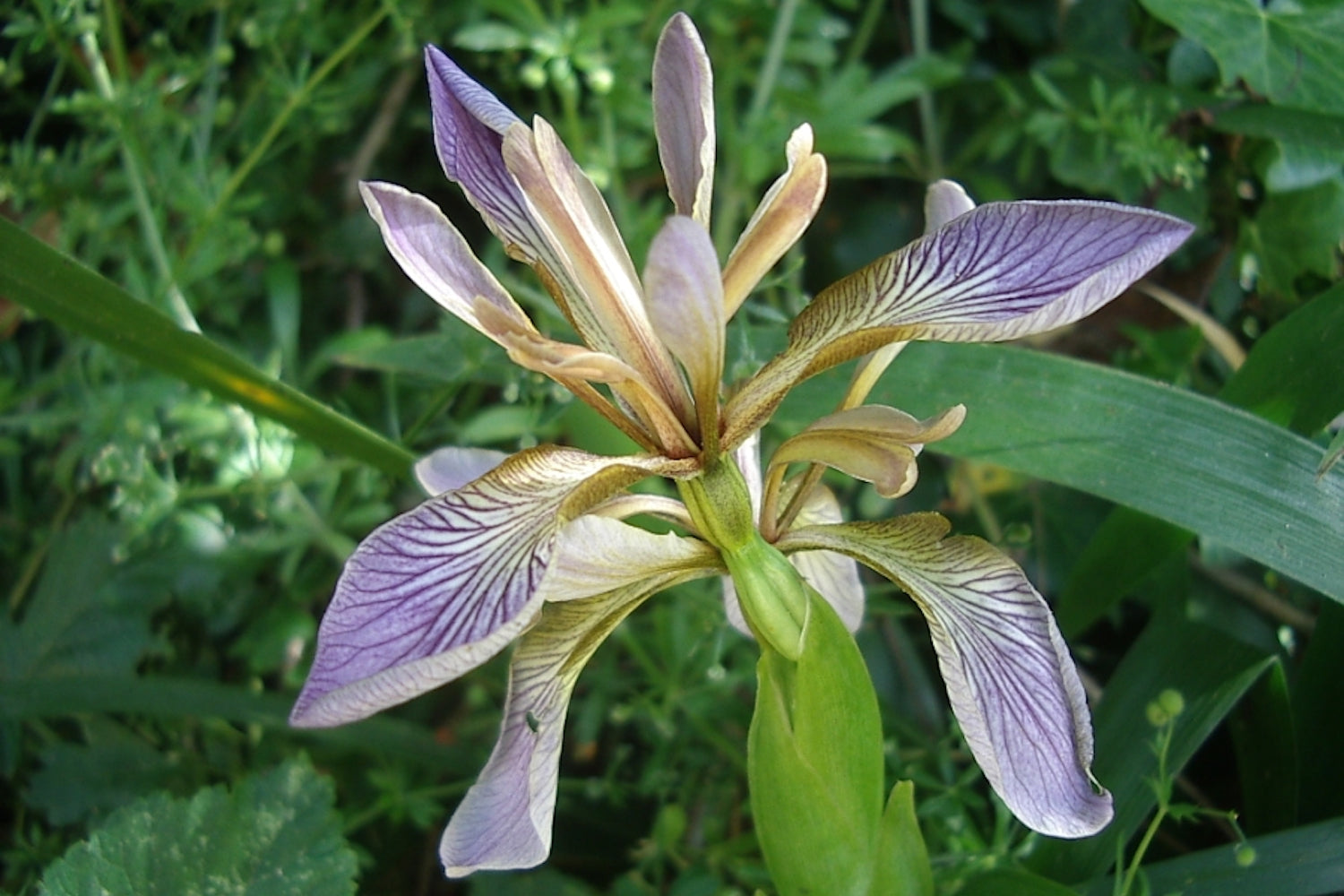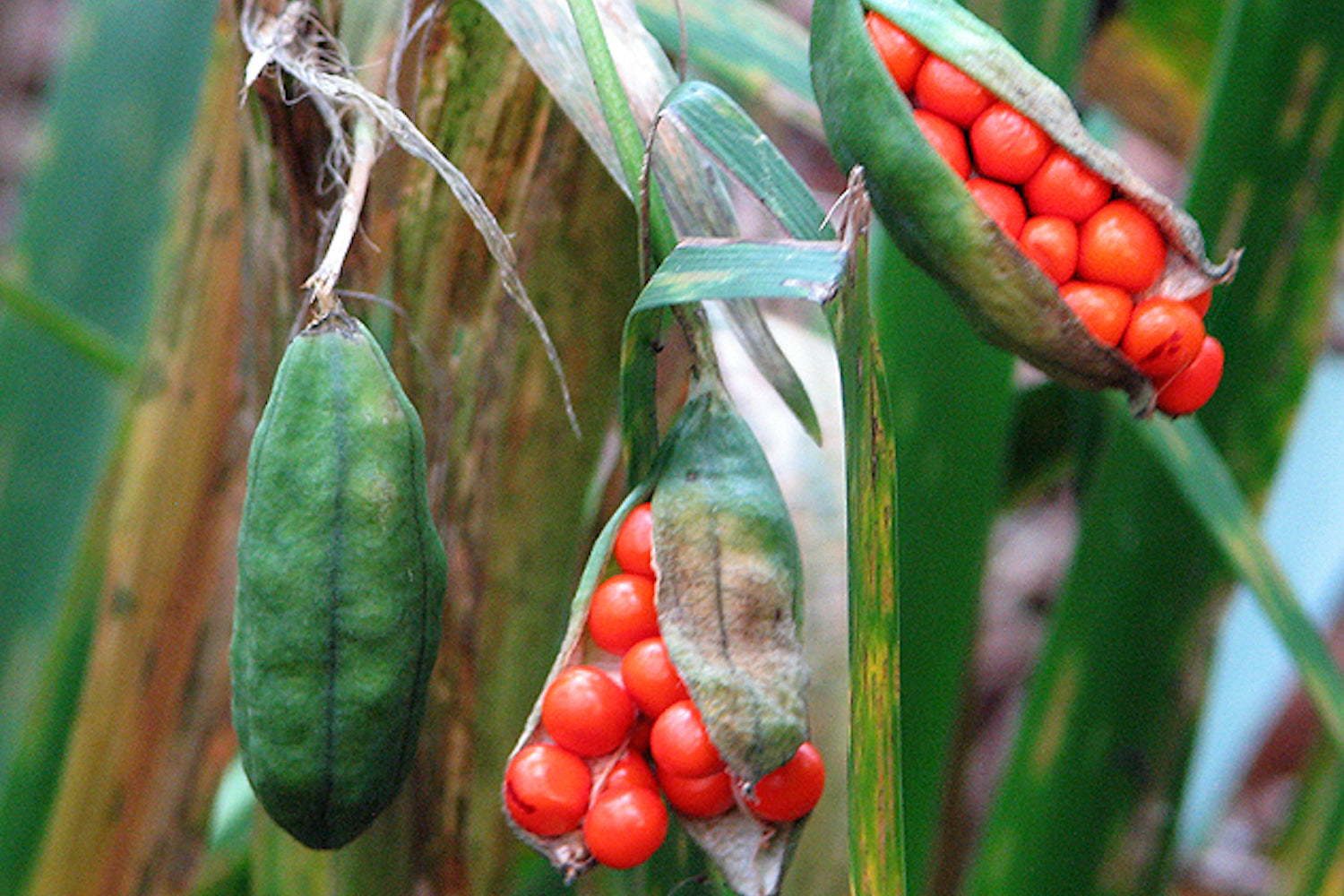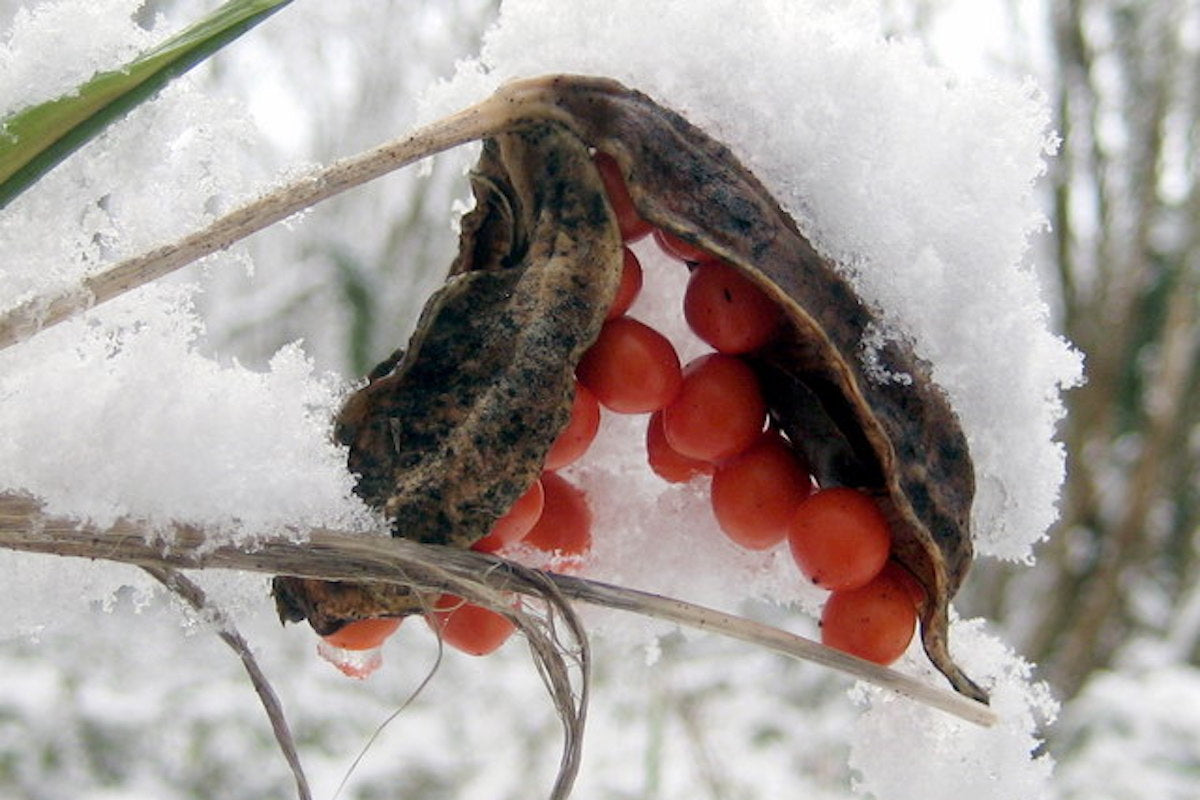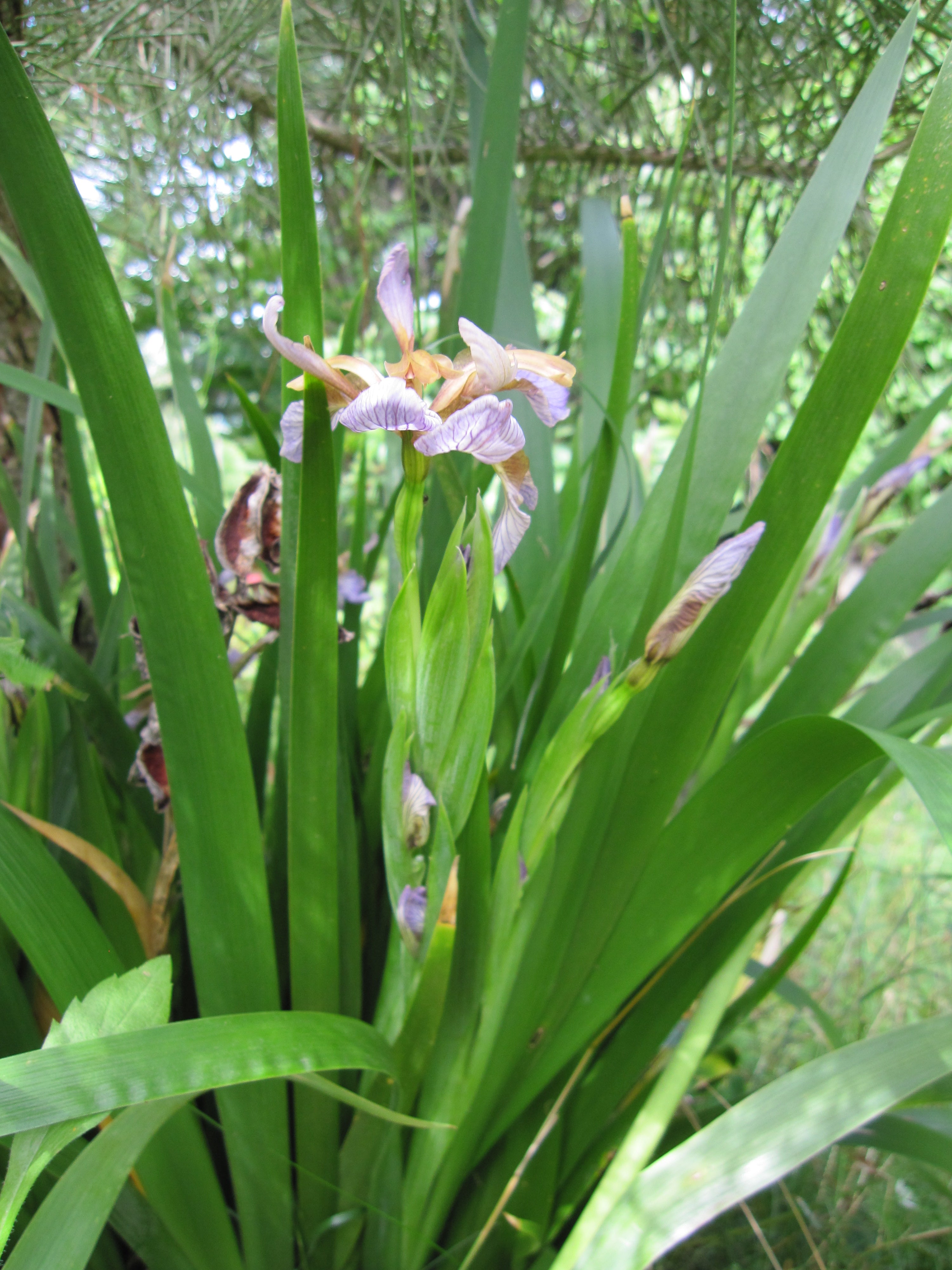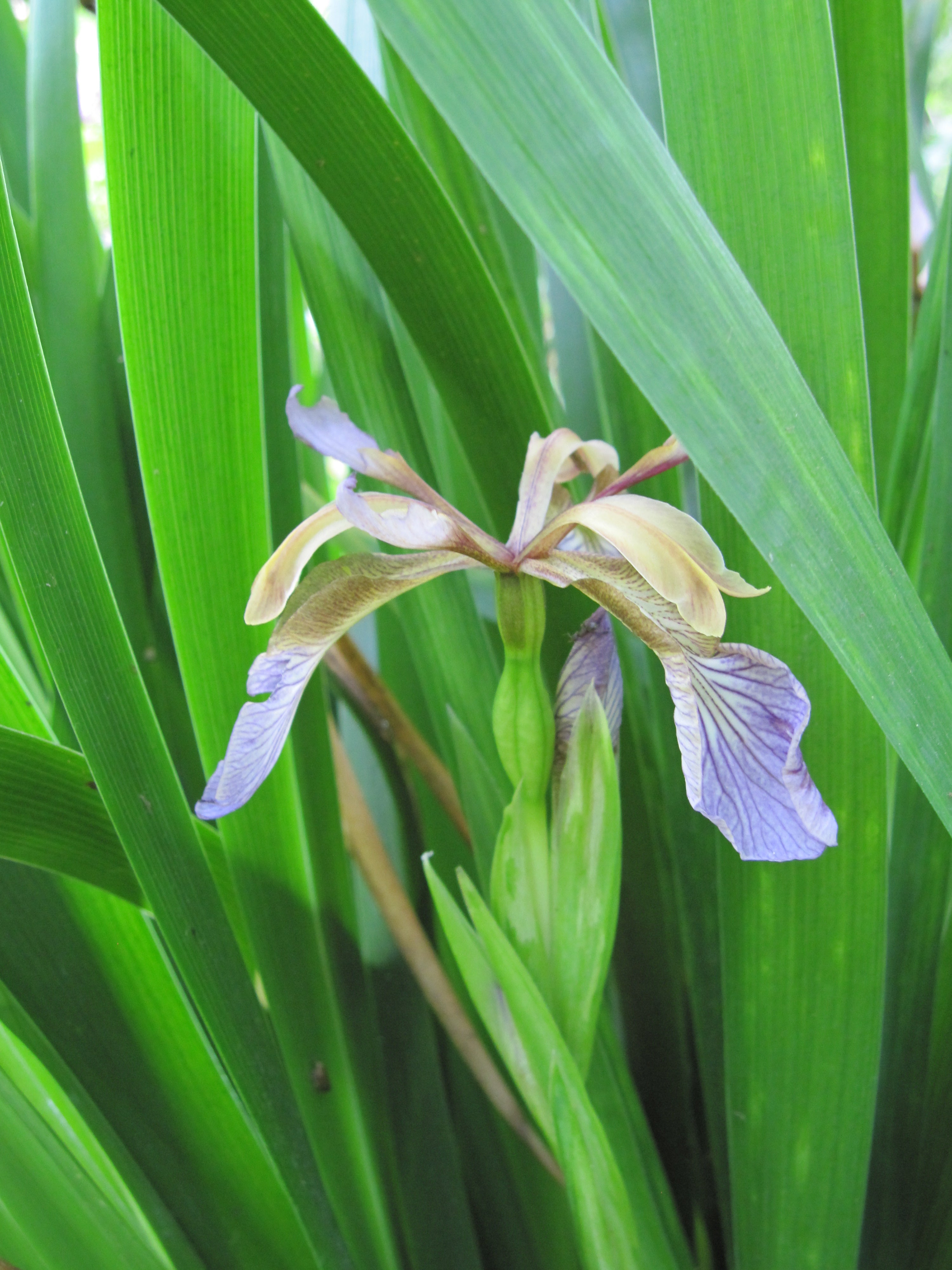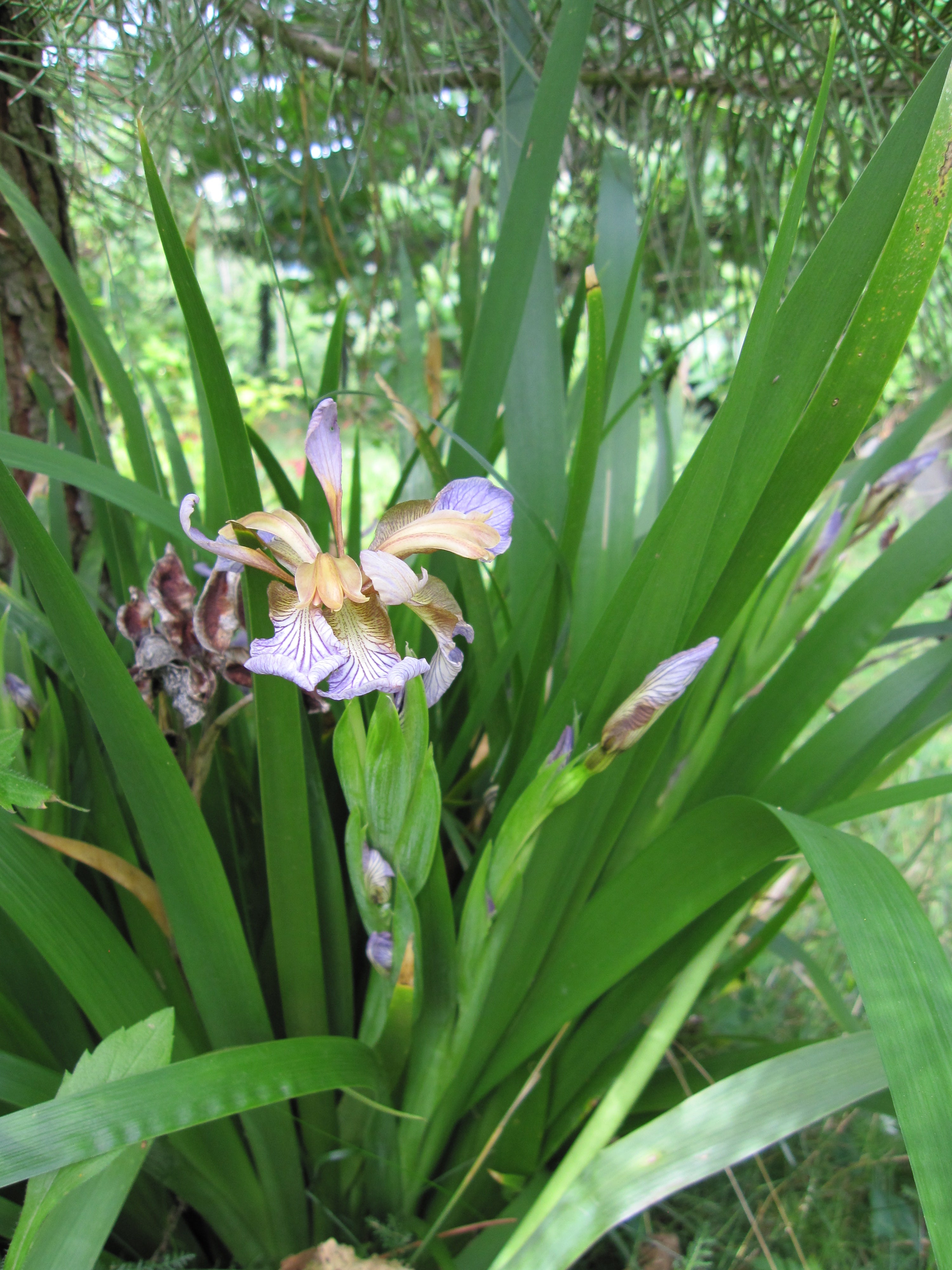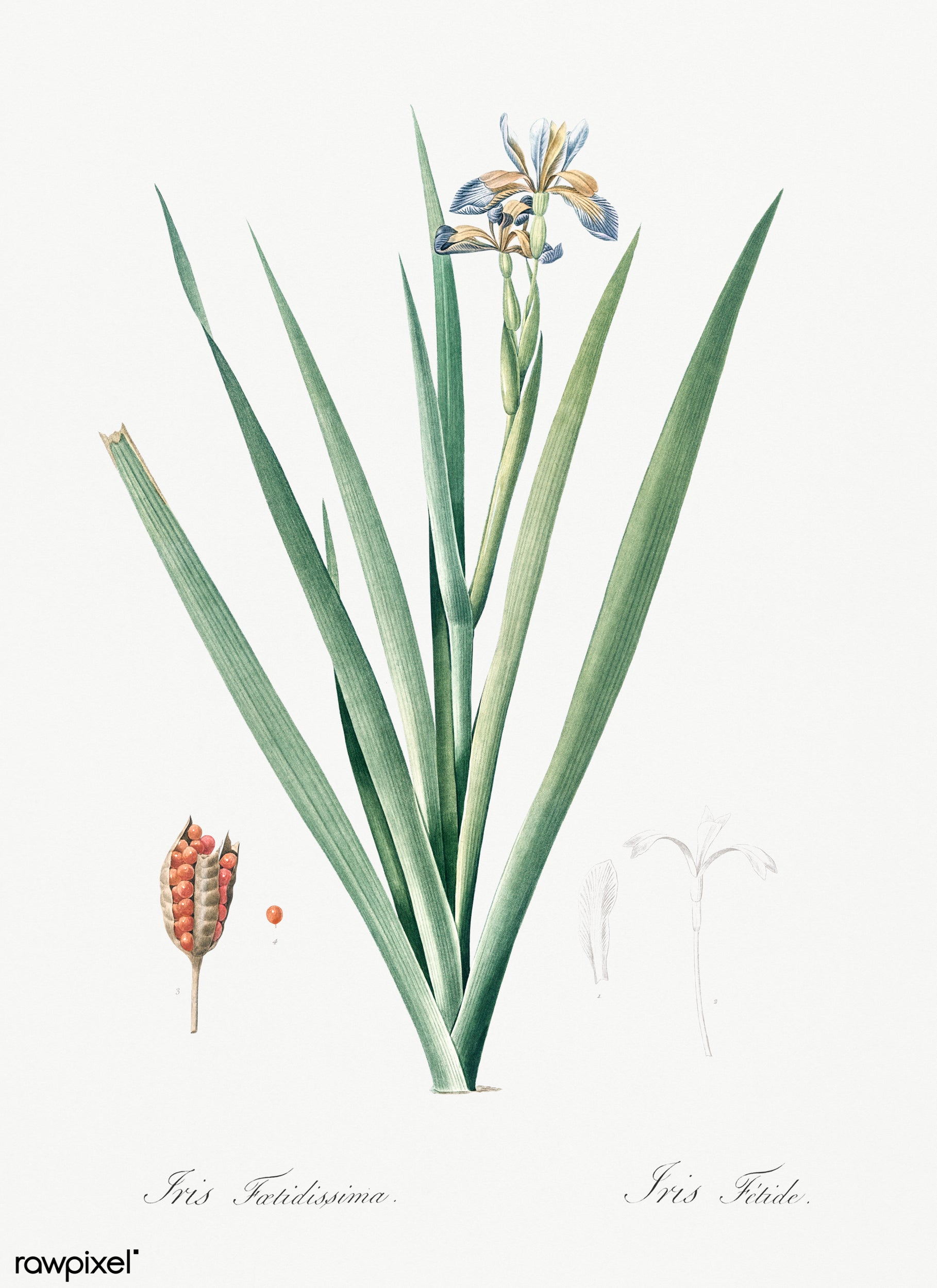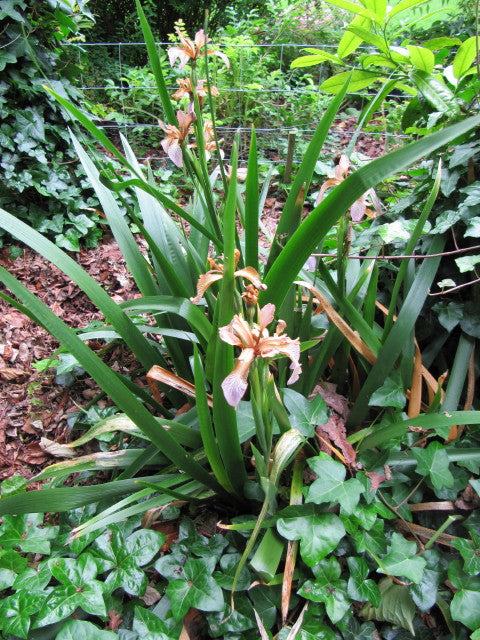Iris foetidissima
Approx. 0.5 litre pot
About this cultivar:
Iris foetidissima has many common names such as the roast beef plant, adder's meat, coral fruit Iris, gladden and gladwyn, among many others. However it is most commonly know as Stinking Iris. The smell is 'beefy' to some when the leaves are crushed, but I don't notice it. 'Gladwyn' I believe means sword grass, which would decribe the leaves - there are none better for an evergreen feature of lance-like-leaves
Apart from Iris pseudacorus (yellow flag Iris) it is the only other UK native iris. Not often thought of a garden plant, it is subtle and reliable, growing almost anywhere. In the autumn and winter its oversized seeds pods are probably more interesting than the subtle summer flowers. The seeds cling to the pods throughout the winter until the spring, and are ignored by birds, keeping their colour (which make them great for arrangements).
It was described by Carl Linnaeus in 1753 using the specific epithet combining the Latin word 'foetid' meaning stinking or bad smelling with the superlative suffix ' issimus' meaning the most so or to the greatest degree which implies this must have been a plant Linnaeus, unlike me, thought really stunk.
Charles Lyte in the Telegraph found out some more history:
Nicholas Culpeper, calling it `Stinking Gladwin', described the leaves as having a strong, ill scent. In his English translation of Rembert Dodoens's A New Herbal, Henry Lyte, calling it `Stinking Gladin', pulled no punches. He said that the leaves were of a lothsome smell or stinke, almost like unto the stinking worme, called in Latine Cimex.
Despite this rudeness, the plant was highly valued as a medicinal herb, especially for making poultices for drawing out splinters and the odd arrow head. And the leaves, when they are crushed, do not have an unpleasant aroma, and certainly do not smell of roast beef.
- Position: Full sun, partial shade
- Soil: Almost any soil, grows well in Ballyrobert
- Flowers: June, July, August
- Other features: Royal Horticultural Society Award of Garden Merit (RHS AGM), Cut Flowers or Dried Flowers
- Hardiness: H6 - Hardy in all of UK and northern Europe (-20 to -15°C), Fully hardy - grows well in Ballyrobert
- Habit: Clump forming
- Foliage: Evergreen
- Height: 60 - 90 cm (2 - 3 ft)
- Spread: 45 - 60 cm (1.5 - 2 ft)
- Time to full growth: 2 to 5 years
- Plant type: Herbaceous Perennial, evergreen
- Colour: Green, purple
- Goes well with: Hosta, Hemerocallis, Geranium
About this genus:
Iris (i-ris) is a genus of 260–300 species of flowering plants with showy flowers. It takes its name from the Greek word for rainbow, referring to the wide variety of flower colours found among the many species. As well as being the scientific name, Iris is also used as a common name. Long in cultivation there seem to be as many cultivars as plants. Culturally the genus has had quite an impact. The fleur-de-lis, a stylized Iris, first occurs in its modern use as the emblem of the House of Capet (rulers of France 987 to 1328). It is also the universal symbol for Scouting. Many artists have a 'thing' with Iris, not least Van Gogh- who was a fan of Iris (not just sunflowers).... see images opposite!
As a group, Iris species can range from drought-tolerant dry land perennials to bog dwellers and from sun to shade, so there is no set of cultivation rules for the genus as a whole. In general though the cultivars we have in our garden (and sell), are tough, low maintenance plants perfect for wet gardens and similar sites.
Try pairing irises in the garden with Hosta, Hemerocallis, Geranium. They also look great as a cut-flower; the reason you don't get them in florists is that they don't transport well.

